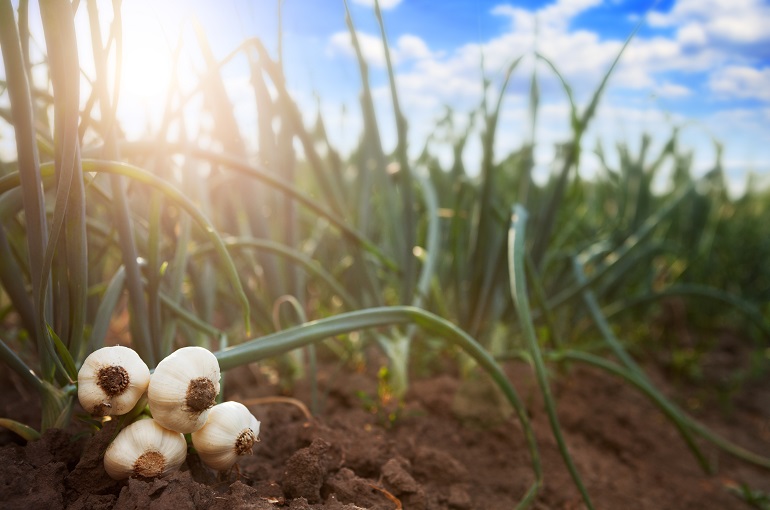Water is one of agriculture’s most precious resources—and nowhere is that more apparent than in garlic cultivation and dairy production. Both industries rely heavily on freshwater inputs, yet they differ significantly in how much water they consume, where it’s used, and what strategies can minimize their footprints. By understanding the nuances of water use in garlic farming and dairy operations, consumers and producers alike can make more sustainable choices.
Why Water Footprint Matters
Every food product has a “water footprint,” the total volume of freshwater used throughout its lifecycle—from production and processing to consumption and waste management. Managing this footprint is crucial because:
-
Resource Scarcity: Many key growing regions face seasonal droughts or long-term water shortages.
-
Climate Resilience: Efficient water use helps farms and herds adapt to changing rainfall patterns.
-
Environmental Health: Reducing runoff and over-extraction protects freshwater ecosystems.
Water Use in Garlic Farming
Garlic (Allium sativum) is often perceived as a low-water crop, but its needs vary by climate, soil type, and irrigation system.
Key Water Drivers
-
Soil Moisture: Garlic bulbs develop underground; consistent moisture during bulbing (mid-season) is critical.
-
Evapotranspiration (ET): Hot, windy environments accelerate water loss from both soil and plants.
-
Irrigation Method: Drip irrigation significantly outperforms flood or furrow irrigation in efficiency.
Estimated Water Footprint
-
Global Average: Roughly 1,500–2,000 liters of water per kilogram of garlic produced.
-
Variation by Region: In arid zones relying on flood irrigation, footprints can exceed 3,000 L/kg. In humid regions with rainfed or drip systems, it may drop below 1,000 L/kg.
Best Practices for Conservation
-
Soil Health: Organic matter improves water-holding capacity—reducing irrigation frequency.
-
Mulching: A layer of straw or compost limits evaporation and suppresses weeds.
-
Drip Systems & Sensors: Deliver water directly at the root zone, ideally paired with soil moisture probes for “smart” scheduling.
-
Crop Rotation: Integrating water-intensive and water-sparing crops balances field-level demand.
Water Use in Dairy Production
Dairy is among the more water-intensive sectors, spanning water for feed crops, drinking water for cows, and processing milk.
Breakdown of Water Consumption
-
Feed Crop Irrigation (≈ 80%): Most water is embedded in alfalfa, corn, or soy grown to feed dairy herds.
-
Animal Watering (≈ 10%): A lactating cow drinks 100–200 L of water per day.
-
Processing & Cleaning (≈ 10%): Milking parlors, storage tanks, and equipment require routine sanitation.
Typical Water Footprint
-
Average: Approximately 1,000–1,200 liters of water per liter of milk.
-
Influencing Factors: Regional climate, feed sourcing strategies, and milking technologies.
Strategies to Reduce Water Demand
-
Feed Efficiency: Improving herd genetics and nutrition to produce more milk per kilogram of feed reduces overall irrigation need.
-
Rainwater Harvesting: Capturing roof runoff from barns and silos for cleaning and animal use.
-
Wastewater Recycling: Treating and reusing wash-down water in non-potable applications.
-
Optimized Milking Systems: Automated milking parlors with cyclic rinse recycling can cut cleaning water use by 30–40%.
Making Informed Choices
Whether you’re a grower, a dairy farmer, or a conscious consumer, these actionable steps can drive sustainable water stewardship:
-
For Producers:
-
Invest in precision irrigation and monitoring tools.
-
Adopt integrated crop-livestock systems to recycle nutrients and moisture.
-
Engage in watershed management initiatives to safeguard local water sources.
-
-
For Consumers:
-
Prioritize garlic and dairy products from farms practicing drip irrigation, rainwater harvesting, or certified sustainable programs.
-
Support local producers to reduce “hidden” water costs tied to long-distance transportation.
-
Reduce food waste—every unused clove or spilled milk represents squandered water.
-
Looking Ahead
Innovations like drought-tolerant garlic varieties and feed additives that boost milk yield per liter of water are on the horizon. By staying informed and supporting farms that adopt water-wise techniques, we can help ensure that every drop counts—today and for generations to come.

Comments (0)
No comments yet. Be the first to comment!